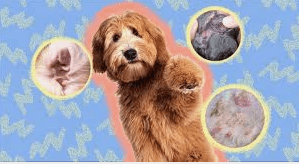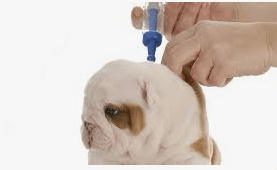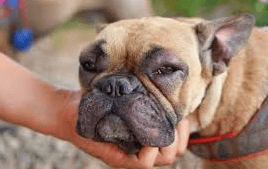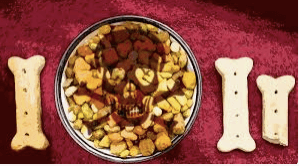Candida overgrowth symptoms should not be ignored. Candida a type of sugar-digesting yeast that is present in the body, in the mouth, intestines and on the skin. It is generally harmless when it is present in small amounts and kept in check by the body's immune system. However, when candida overgrows, it can lead to a fungal inflection called candidiasis. Candida overgrowth should not be ignored.
Candida is opportunistic and can sometimes colonize or invade damages tissues of dogs, especially those that are immunocompromised. Candidiasis can take place locally in just one part of the body or it can systemically afflict the entire body. Whether candidiasis is local or systemic, it typically affects the mouth, skin, nose, ears and gastrointestinal tract and genital tract. When candidiasis is present, the symptoms can range from mild to severe and can present as itching, redness and inflammation, particularly in the paws, ears and skin folds. Other symptoms include musty odor, greasy or flaky skin, excessive licking or scratching that can create sores or crusty lesions.
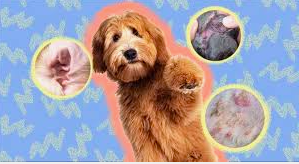
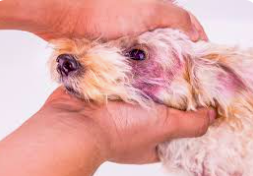
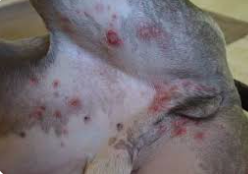
Candidiasis can impact dogs of any age and breed, even if the the dog doesn't have any predisposing conditions. According to the AKC, the West Highland White Terrier, Basset Hound, Cocker Spaniel, Silky Terrier, Australian Terrier, Maltese, Chihuahua, Poodle, Shetland Sheepdog, Lhasa Apso and Dachsund. Additionally, dogs with floppy ears who swim regularly including Golden Retrievers and Labrador Retrievers are prone to get more yeast infections. Miniature Schnauzers, Bichon Frise and Shih Tzus are also more susceptible to candida overgrowth due to the thick hair in their ear canals that can prevent necessary airflow to keep their ears dry.
Causes of candidiasis include trauma to the skin such as burns, inflamed tissue like necrotizing dermatitis, viral parvovirus, diabetes, as well as dogs with catheters. Additionally, antibiotic and steroid use, foods high in sugar and carbs (like kibble), and heat and humidity can also cause candidiasis. Candida overgrowth should not be ignored.
So, what do you do if your dog does have candidiasis?
The goal is to heal the root cause, so you can ideally avoid candidiasis in the future. First, take a look at their diet. Feeding raw or homemade food is the way to go as these kinds of foods tend to be highest in protein and fiber and minimal carbs. Unlike raw or home-cooked, most kibble contains between 30% - 70% carbohydrates, which is an insane amount of sugars, which the canine body cannot digest, but yeast thrives on it. By feeding a diet high in carbohydrates, you are feeding the yeast. By removing carbohydrates from their diet, you starve the yeast and kill it. In addition to a high protein and low carb diet, adding fermented foods like kefir, yogurt or apple cider vinegar "can help enhance nutrient absorption, rebalance the microbiome, and introduce beneficial and competitive yeasts and bacteria to help address the underlying issues that allow Candida to overgrow" (Solutionspetproducts). You can also add anti-fungal foods like garlic or olive leaf to kill the yeast and flush it from your dog's body.
Second, take a look at medication and vaccines your dog may have received. If he or she has taken antibiotics or corticosteroids, they are at increased risk for developing candidiasis because they disrupt the optimal ratio of bacteria and fungi in the body. Another factor to consider is vaccines. While vaccines can be part of keeping your dog healthy, too many vaccines can be a problem. Vaccines work by triggering the immune system to create a response. In dogs that are sick or genetically predisposed to having an adverse reaction to vaccines, such as pure-bred dogs or dogs that have already received their core vaccinations, vaccines trigger too much of an immune reaction. When this happens, the immune system becomes weaker instead of stronger and can disrupt the optimal balance of fungus and bacteria in the gut, creating an opportunity for candida overgrowth to take place.
Third, you want to eliminate as many heavy metals as possible from your dog's lifestyle. Heavy metals are routinely found in vaccines, drugs, fish and highly processed food like kibble. Adding bentonite clay, humic acid and chlorella to your dog's diet will bind to heavy metals in the body, making it much easier for them to be eliminate. Eliminating heavy metals, helps to eliminate excess candida. .
Lastly, try topical sprays to help ease any discomfort or itchiness your dog may be experience. Take some apple cider vinegar in a spray bottle and spray it in your dog's fur. Massage gently all around. This acts to soothe the skin while simultaneously removing yeast and restoring proper fungus to bacterial ratio in the gut.
If all else fails, anti-fungal medications can be prescribed by your veterinarian. Fluconazole, ketoconazole, itraconazole and other oral anti-fungal medications can be given. You can also use anti-fungal shampoos, sprays and wipes. However, these medications will alter the bacterial and fungal composition of the gut, and it may not achieve the optimal results you were hoping for. These medications don't cure the root cause and the worry here is that candidiasis could return. For most dogs, evaluating and adjusting lifestyle is enough to cure candidiasis completely.
Donate to Bobzilla.org

$5.00
The veterinary business is business which is not in the business of curing your animal, but Bobzilla's business is. Bobzilla is committed to one hundred percent transparency in all of its scientific research into animal wellness and prevention of disease and one… read more

